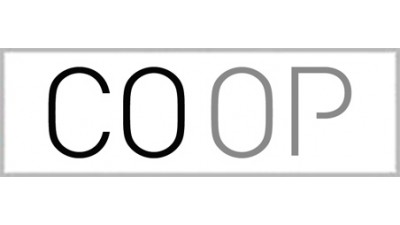How COOP Makes Hospitality Brands Work

In the built environment, placemaking has become an overused industry buzzword derived from old urban planning principles.
The concept is simple and powerful: take a collection of residential, retail, commercial and public spaces, and bring them together in an accessible location. This maximizes the space while creating a desirable destination that people want to experience.
That same philosophy is now being applied to hospitality, as hotel owners and executives embrace this idea as a way to create a strong sense of place. Luxury hotels have gone beyond ornate lobbies, luxe rooms and on-site spas. They now incorporate memorable programming and “Instagrammable” moments. Some have even gone as far as to offer underwater submarine rides. The idea is to bring physical places down to a more human scale.
COOP, a U.S. brand company based in NYC, Los Angeles and Boston, has leveraged its 16-year hospitality and real estate branding expertise for some of the most iconic destinations in the U.S. across all asset classes. Founded in 2002, COOP takes a nontraditional approach to creating new brands, as well as revitalizing existing ones.
The company has an insight-driven, strategic, creative approach to creating destination brands; it sees places through a human lens, emphasizing how people interact with a place, what it means to them and what it says about them. This is a method that allows the brands to connect deeper with their audiences and unlocks what differentiates the brand in an overcrowded market.
“The number of new hospitality brands across the country is growing exponentially,” COOP founding partner and CEO Jim Moran said. “Unfortunately, the industry doesn’t need more of the same; it needs to make hospitality brands work — smarter, more targeted, more agile and differentiated.”
Moran sees the idea behind “making brands work” as brands that go beyond today’s often subjective and introspective design approach. Hospitality brands instead need to find innovative approaches to connect a hotel’s offering with a larger psychographic profile of customers.
“Brands 'work' because clients and branders understand that difference drives value,” Moran said. “One simple but challenging question that our COOP team always ask during our strategic process is: 'why does this place need to exist?'”

This strategic creative process was the key to unlocking the value of The Wink Hotel in Washington, D.C. When Brookfield acquired the former Renaissance Hotel in Dupont Circle, they challenged COOP to reimagine the experience beyond the traditional corporate hotel landscape. The Wink, with its pop-art visuals and bright colored logo, appeals to a more youthful demographic compared to the more restrained hotel offerings in the area.
“First we had to understand the rules everyone else was playing by, and then we started to break all of those rules to create something new,” COOP partner and Chief Innovation Officer Simon Hunter said.
The Wink encourages its guests to “live a little louder,” a tagline that is inviting, stimulating and lively, Hunter said. The rebrand creates a new voice and experience while rewriting the rules of boutique hotels.
COOP’s recipe for crafting a destination brand starts with context. A brand has to know where it fits within the industry, and where it can stand out. In the case of The Wink, it was an opportunity to move away from the traditional D.C. hotel. From there, COOP analyzed the brand’s audience, seeing who interacts with the brand the most and what value they receive from it.
Based on these insights, COOP creates a brand signature, the reason for the brand to exist. The Wink is more than a name: it represents a tongue-in-cheek, flirty personality, brought to life through the guests and staff.
For Spruce Peak, a resort community in Stowe, Vermont, COOP had to unify the separate lodge/hotel, members club, real estate, retail village, spa and dining offerings into a coherent, inspiring brand. The company uncovered a powerful set of emotions for the new brand and a set of human truths rooted in this particular place, which is Vermont’s only slopeside community.
People who feel they belong to this place all describe the same desire for the creation and sharing of family rituals, as well as a feeling of connectedness to the location and to each other. Spruce Peak’s branding was about tapping into human behaviors, not amenities.
This connectedness became Spruce Peak’s signature, becoming the distinctive promise across all experiences and communications. It became the way that people recognize, understand and remember the place’s characteristics.
In many of today’s largest and fastest-growing cities, COOP has partnered with hoteliers and developers alike to rethink the “place experience” in a landscape saturated with copycat brands. Their iconic and irreverent approach is redefining how ownership can realize their development vision potential and truly make their brands work for the community, customers and their own ROI, Hunter said.
Catch COOP Chief Innovation Officer Simon Hunter on the Brand Explosions panel at Bisnow’s BLIS East event Oct. 23.
This feature was produced in collaboration between Bisnow Branded Content and COOP. Bisnow news staff was not involved in the production of this content.

